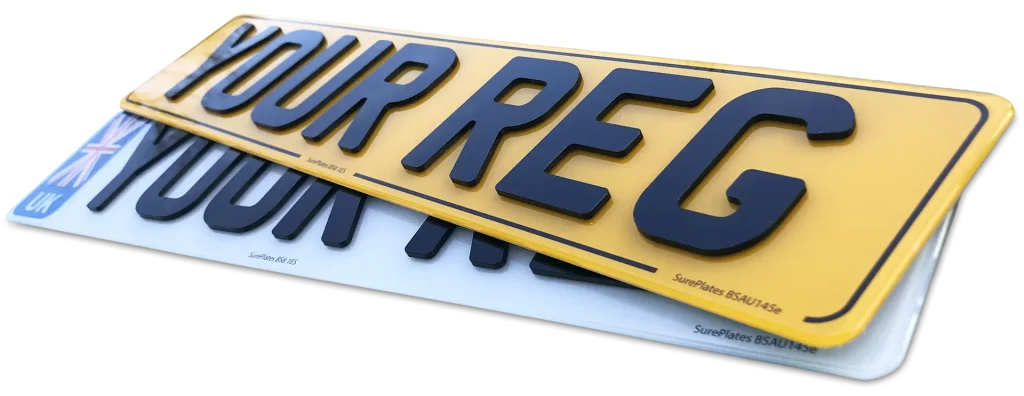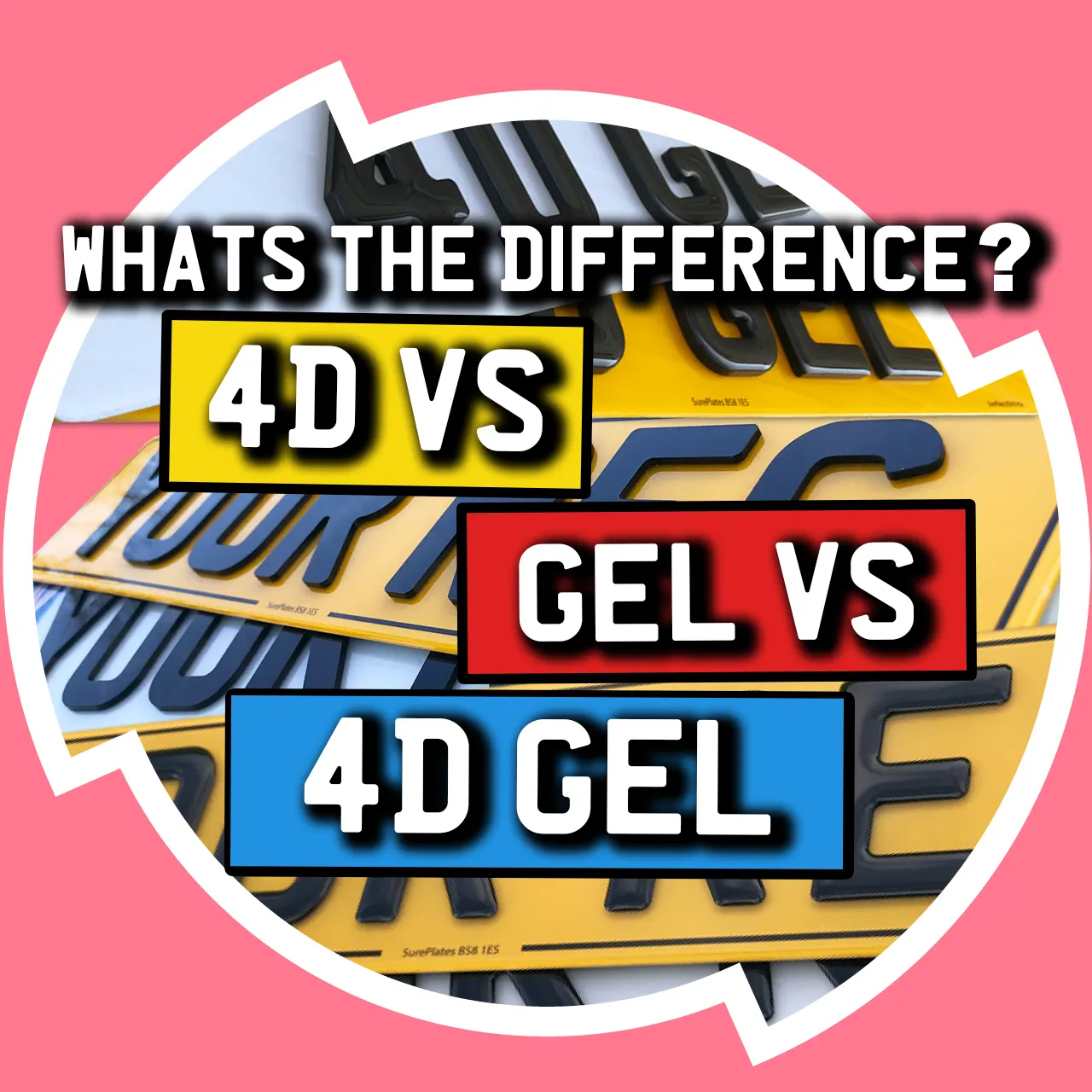When it comes to personalising your car, choosing the right style of number plate can make a big difference. Among the various styles available on the market, 4D number plates have gained a considerable amount of popularity for their unique and premium appearance.
But how do they compare to other styles such as regular printed number plates, gel number plates, or 4D gel number plates? In this article, we’ll dive into the key differences between UK 4D plates and other styles, considering factors such as aesthetics, durability, price, and popularity.

The Key Differences Between 4D and Standard Printed Number Plates
Regular printed number plates, the most common type found on vehicles in the UK, feature printed characters on a reflective background. They are simple and functional, and meet all the legal requirements and standards. However, they lack the depth and tactile appeal that 4D number plates offer.
4D number plates feature raised characters made from acrylic (or sometimes aluminium), giving them a distinct three-dimensional appearance. This ‘4D’ effect is achieved by bonding the characters directly to the surface of the plate, creating a striking visual impact that sets them apart from standard plates.
So, while standard number plates are printed, 4D plates require a more complex process to make that includes laminating, cutting, and bonding the characters to the plate. This not only gives them their unique appearance, but also impacts their durability and price, which we will explore in the following sections.

The Aesthetic Differences Between 4D and Gel Number Plates
When it comes to aesthetics, both 4D and gel number plates offer a unique and stylish look that sets them apart from normal plates. However, there are some key differences between the two that can influence your choice depending on your personal preference and the style you want to achieve.
Gel number plates also feature raised characters, but they are instead made from a semi-flexible polyurethane doming resin. The characters are formed by applying doming resin to a sheet of printed characters that have been weeded (technical term for removing the excess vinyl from a sheet of cut characters), resulting in a domed or ‘3D’ effect – the same as gel badges or stickers.
Gel plates have a glossy high-end finish that catches the light in a different way to 4D plates which gives them a unique appearance.

What Is the Difference Between 4D Plates and 4D Gel Number Plates?
4D gel number plates are a combination of the 4D and gel styles. A gel character is placed on top of a matching 4D character, creating a domed gel cap on top of a standard 4D character, adding an extra layer of depth and dimension. The result is a unique, high-end aesthetic that combines the sharpness of 4D with the glossy and luxurious appeal of gel.
4D gel number plates are also typically more expensive than 4D reg plates due to the additional materials and labour involved in creating them. However, if you’re looking for a number plate that offers a unique style and you’re willing to invest a bit more, 4D gel plates could be the perfect choice for you.

Comparing the Price: 4D Plates Vs. Other Number Plates
When it comes to choosing the right number plates for your vehicle, the price is often a significant factor. It’s important to understand the cost differences between the various styles we have available so you can make an informed decision that suits your budget and preferences.
Here’s a table showing the difference in prices between the various styles we offer:
| Plate Style | Price Per Plate | Price Per Set |
| Printed number plates | £10.99 | £21.99 |
| Gel number plates | £20.99 | £41.99 |
| 4D number plates | £22.49 | £44.99 |
| 4D gel number plates | £27.49 | £54.99 |
While the price increases with each step up in plate style, so does the aesthetic appeal and quality. It’s up to you to decide which style best suits your car, personal taste, and your budget.
The Popularity of 4D Number Plates Compared to Other Styles
The most common type of plate in the country is the standard printed plate. This is due to their affordability and simplicity, and the fact that they are the “standard” way to make a number plate. The other premium styles are relatively recent.
Next in line in terms of popularity are 4D number plates. These plates have seen a huge surge in popularity in the last few years thanks to their unique and modern style. The raised characters give the plates a depth and impact that sets them apart from regular plates.
Gel number plates are the next most popular style. These plates show off a glossy, high-end finish. The raised, gel-coated characters add a touch of luxury to any vehicle.
Finally, the least common but most premium option is the 4D gel number plate. These plates combine the best features of both 4D and gel plates, resulting in a unique and eye-catching style.
This data is based on our sales data over the last 2-years.
Summary
In this comprehensive comparison of number plate styles, we have covered the key differences between 4D number plates and other styles such as printed, gel, and 4D gel number plates.
We explored the stylistic differences, with 4D plates offering a unique depth and tactile appeal. Gel plates provide a glossy, high-end finish. We also introduce the ultra-premium 4D gel number plates, which combine the best features of both 4D and gel plates.
The style you decide to go with will ultimately depend on your personal tastes and preferences, your budget, and the look you want to give your car.
Whatever you decide, our plate builder can assist you in creating road legal, compliant number plates with a range of options and configurations possible for every style.
